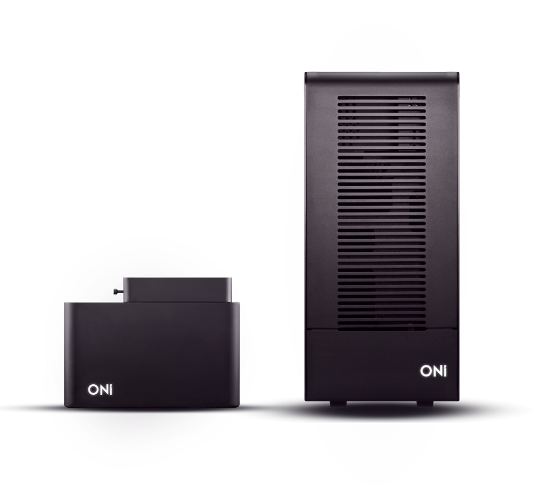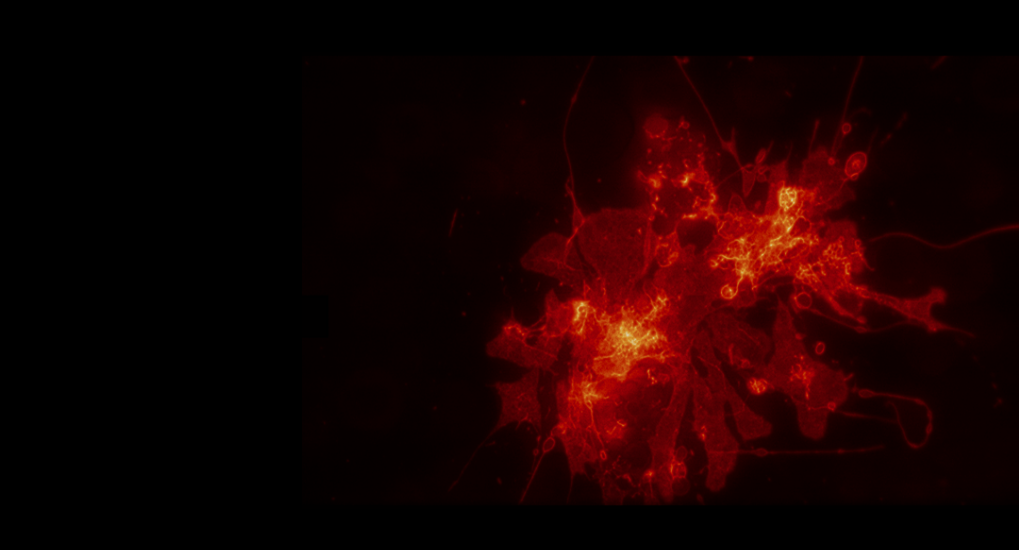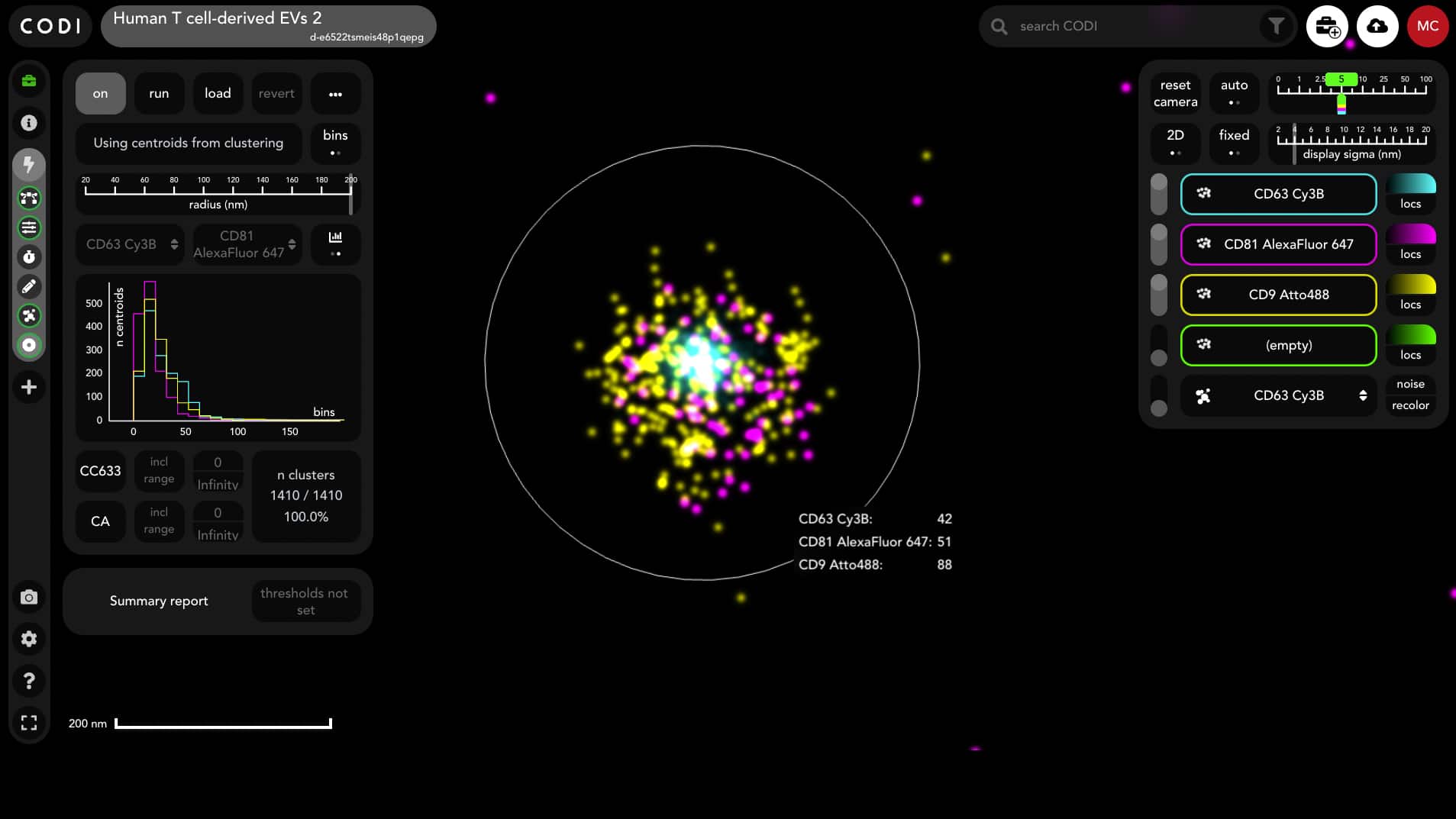Upcoming Virtual dSTORM Training – Coming January 29, 2026 register now>
PAINT Imaging
A Simple Overview
Why is DNA-PAINT useful?
The labeling strategy used in PAINT leads to very specific targeting of your protein of interest. The main advantages of DNA-PAINT are:
– Increased resolution
– Higher localization precision
– Lack of bleaching due to continuously replenishing fluorophores
– Multiplexing
Inherent to the transition binding-induced blinking, PAINT offers several benefits, such increased resolution and the lack of photobleaching. The duration of each blink depends on the DNA sequence, which determines the off-rate of the binding. A longer blink means a brighter spot that can be detected by microscopes like the Nanoimager with higher localization precision, leading to images of higher resolution. In addition, the fluorophores are constantly replaced by new imaging strands through binding kinetics, which prevents them from being permanently bleached like in dSTORM where these are fixed to the epitopes.
Some remarkable experiments leveraging PAINT as a technique over other super-resolution techniques have also been performed. For instance, multiplexing 3D imaging in cells using DNA-PAINT has been shown. This takes advantage of the serial imaging of different epitopes tagged with separate docking strands, while the imager strands for each epitopes is flown into the sample in a sequential manner. A recent in vitro study revealed that by using the kinetic fingerprint between the docking and imager strands, one can image up to 124 colors in one sample!
By using probes whose photophysics can be calibrated, it is also possible to perform quantitative experiments. With this technique, called qPAINT, one can extract the number of docking strands, and thus targets, from a region imaged using SMLM, assuming a constant binding rate.
Interestingly, PAINT can also be used in combination with other SMLM techniques. Read our previous Application note showing how multimodal super-resolution imaging provides the opportunity to access further information of subcellular structures by using different labeling strategies. Together with PAINT staining, one can use genetically encoded fluorescent proteins to target other molecules, hardly accessible with PAINT labeling.
Although PAINT has the advantage of facilitating longer imaging time, higher resolution, and multiple labeling, it also comes with a drawback. The imaging sessions tend to be longer as the positional sampling rate depends on the hybridization kinetics, which are slower than dSTORM dye blinking. Some recent developments have successfully demonstrate the ability to speed this process up by 100x, either by optimizing the DNA sequences to increase kinetic rates, using computational methods, or supplementing ethylene carbonate to the imaging buffer.

Figure 2. Two-color imaging using PALM and PAINT sequentially in the same sample. RNAP tagged to PAmCherry1 (cyan) and JF646-Hoechst transiently labeling the bacterial nucleoid (magenta). Samples provided by Dr. Christoph Spahn, Max Planck Institute for Terrestrial Microbiology, Marburg, Germany.

Figure 3. Clathrin coated pits imaged on the Nanoimager labeled with a rabbit anti-clathrin heavy chain primary antibody, and detected with the Massive Photonics “massive sdAb-2-plex” kit for DNA-PAINT imaging in fixed COS-7 cells. Localizations are colored by frame index, showing how localizations are overall evenly distributed over the acquisition.
How do I get started with DNA-PAINT?
To get started with DNA-PAINT, one would need to label their sample with a docking strand linked to an antibody, nanobody, or aptamer that recognizes the target molecule. As the docking strands are immobilized on the epitopes of interest, the imaging strands are suspended in the solution containing the imaging buffer. Typically the imaging strands concentration is kept at 0.1-1 nM suspended in PBS and an oxygen scavenger buffer. The Nanoimager can be used to image the transient bindings event, obtain real-time single molecule localizations and process the image afterwards.
For in vitro imaging of DNA-PAINT, one can design a biotinylated DNA origami nanostructure with the docking strands. The nanostructure can be immobilized on the surface using biotin-avidin conjugation. Gattaquant offers a range of ready-to-image samples with DNA origami structures. Read more on this case study using the Nanoimager.
Why should I consider the Nanoimager for PAINT imaging?
The Nanoimager and accompanying software tools allows researchers to capture the fast and transient binding events in PAINT over time and localize them with high precision, allowing to localize single molecules within a large field of view using either TIRF or HILO illumination. Our cloud-based CODI platform uses clustering-based algorithms to characterize molecular structures and help determine their morphological features or colocalization.
The Nanoimager is also microfluidics-compatible, which enables the automation for serial imager probe exchange. As mentioned above, while DNA is the most common molecule to do PAINT, Nanoimager users have also successfully employed protein transient binding or glycan–lectin interactions.
Figure 3 above shows how PAINT was used to image clathrin-coated pits at sub-20 nm resolution.
To learn more about using PAINT on the Nanoimager get in touch with our team!

References
- Civitci, Fehmi, et al. “Fast and multiplexed superresolution imaging with DNA-PAINT-ERS.” Nature communications 11.1 (2020): 4339.
- Jungmann, R., Avendaño, M., Woehrstein, J. et al. Multiplexed 3D cellular super-resolution imaging with DNA-PAINT and Exchange-PAINT. Nat Methods 11, 313–318 (2014).
- Jungmann, R., Avendaño, M., Dai, M. et al. Quantitative super-resolution imaging with qPAINT. Nat Methods 13, 439–442 (2016).
- Muslinkina, Liya, et al. “Structure-based rational design of two enhanced bacterial lipocalin Blc tags for protein-PAINT super-resolution microscopy.” ACS Chemical Biology 15.9 (2020): 2456-2465.
- Narayanasamy, Kaarjel K., et al. “Fast DNA-PAINT imaging using a deep neural network.” Nature Communications 13.1 (2022): 5047.
- Riera, Roger, et al. “Single-molecule imaging of glycan–lectin interactions on cells with Glyco-PAINT.” Nature Chemical Biology 17.12 (2021): 1281-1288.
- Spahn, C.K., Glaesmann, M., Grimm, J.B. et al. A toolbox for multiplexed super-resolution imaging of the E. coli nucleoid and membrane using novel PAINT labels. Sci Rep 8, 14768 (2018).
- Strauss, Sebastian, and Ralf Jungmann. “Up to 100-fold speed-up and multiplexing in optimized DNA-PAINT.” Nature methods 17.8 (2020): 789-791.
- Wade, Orsolya K., et al. “124-Color super-resolution imaging by engineering DNA-PAINT blinking kinetics.” Nano letters 19.4 (2019): 2641-2646.

